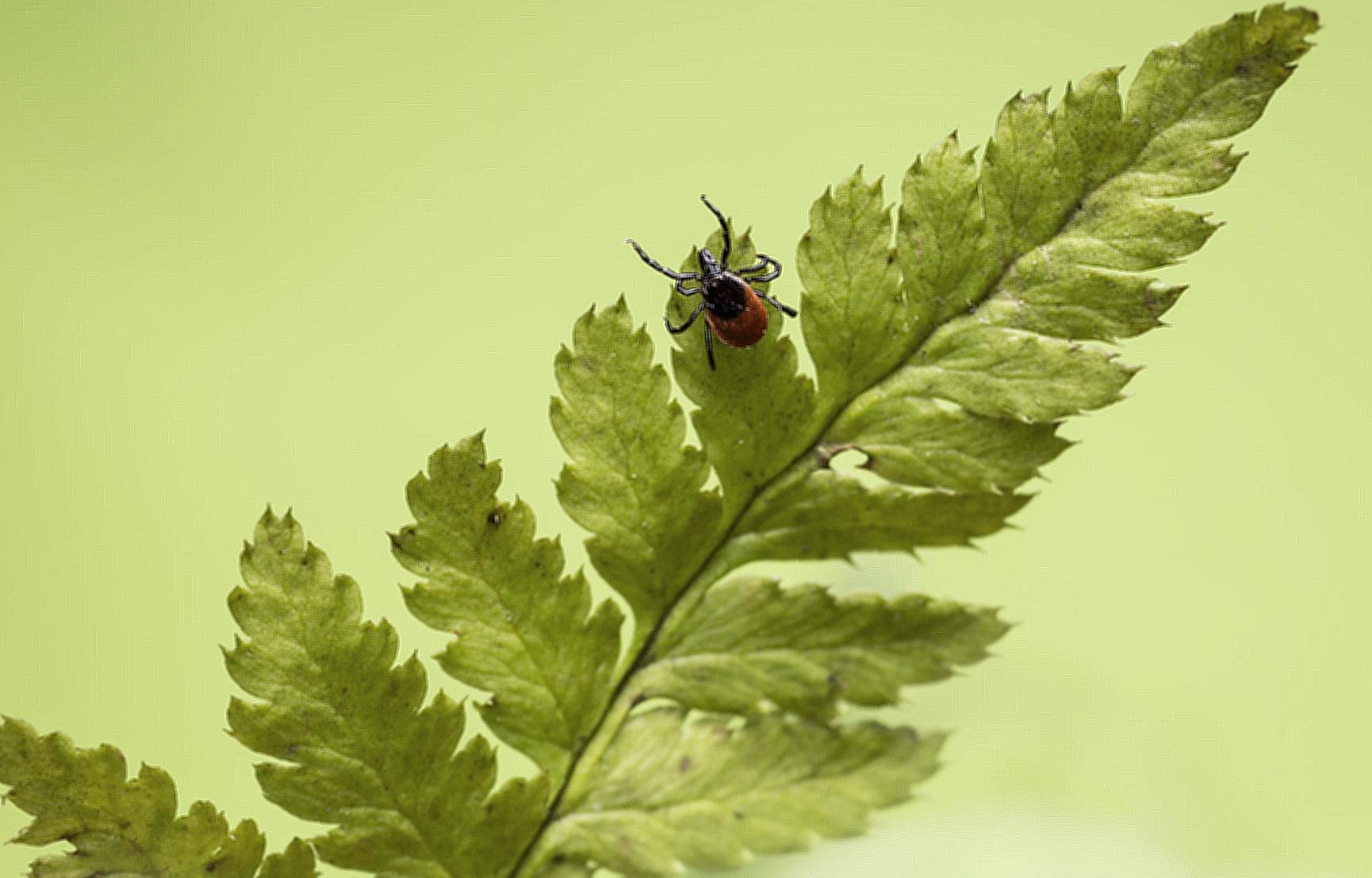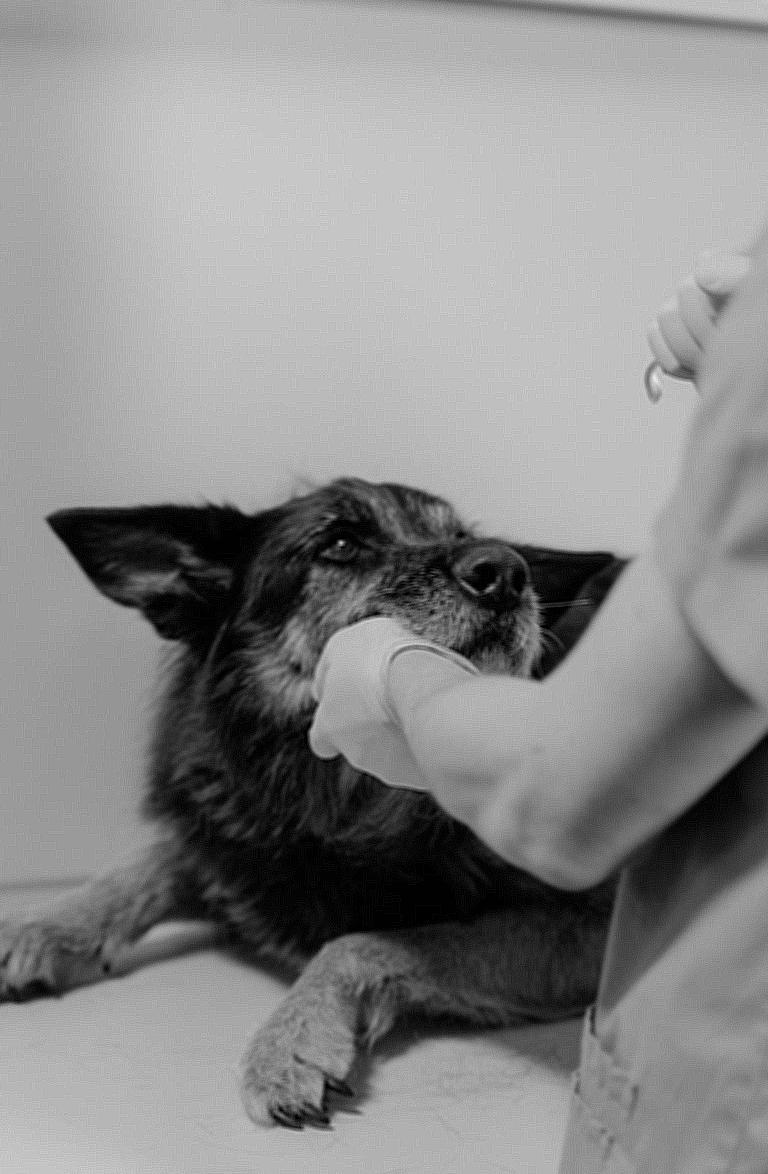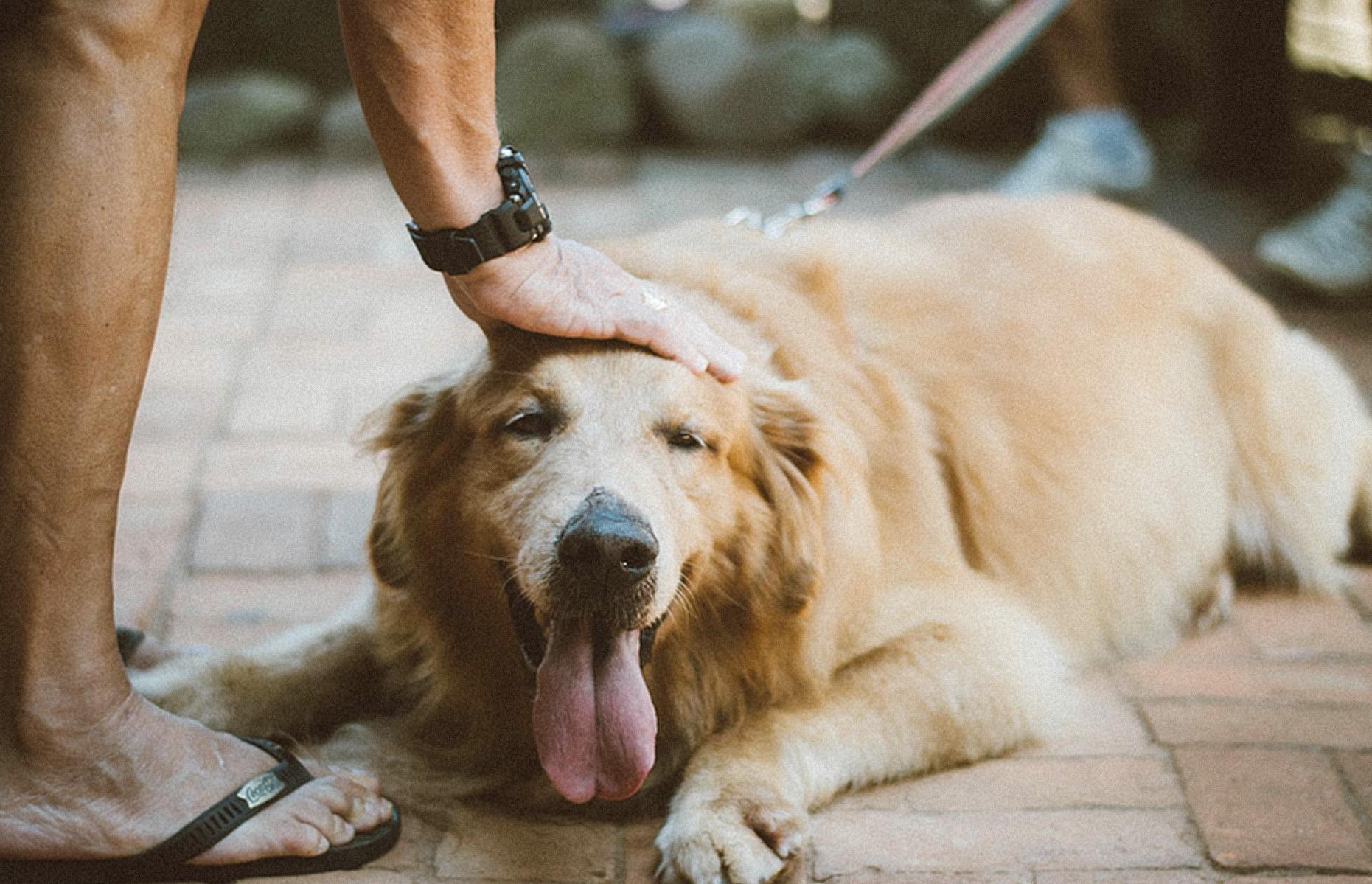
If you love your pup, there is nothing that can shock more than finding a dried dead tick on your dog. Not only is this alarming on its own, but ticks can also cause your beloved pooch a great deal of harm. From skin irritation to severe infection, there are several risks to consider when it comes to ticks on dogs—especially if they have been lingering for some time.
This blog post will provide a comprehensive overview of all things related to dried dead ticks on dogs. We’ll cover the causes of these troublesome critters, the steps for safely removing them, how to prevent future infestations, the risks of leaving a tick on a dog unattended, common symptoms of infections due to ticks, what to do if you notice a tick on your pup, ways to naturally prevent ticks on dogs, commonly asked questions, and valuable resources to consult.
Overview of Dried Dead Tick on Dogs
Dried dead ticks are the deceased dried versions of blood-sucking parasites that — in their living form — can attach themselves to dogs and spread infections. Ticks are small, spider-like creatures that have a unique design and attach themselves to larger animals to feed on their blood.
Ticks come in two forms: living and dried (dead). They usually attach onto the body of a dog and attach themselves there by using their sharp mouth to pierce the skin and begin feasting on the dog’s blood supply. Ticks can harbor a variety of harmful infections, including Lyme disease and Rocky Mountain spotted fever, making it essential to be aware of how to spot them, what symptoms to look for, and how to correctly remove them.
Signs to Look for When You Suspect a Ticked Dog
One of the first signs to look for when you believe your dog may have a tick on it is scabs or otherwise irritated areas on their fur. When a tick embeds itself on a dog’s body, they will typically create scabs to help them remain attached to the skin. Additionally, ticks can sometimes be felt as bumps on your dog’s body due to them having already fed and expanded to multiple times their original size.
When inspecting your dog for ticks, the most common areas they are found are around the head and neck, but can be located anywhere on their body. If a tick is present, your dog may become uncomfortable or display unusual behavior as a result of the parasite’s presence, so be sure to inspect for ticks after walks in woods and areas known for having a greater presence of ticks.
Diagnosis of Tick Bites
If you are unsure whether your dog has been bitten or not, then the first step to confirming a tick bite is to thoroughly check your pup all over for signs of ticks every 3-4 days after a walk. Check their fur as far down to the skin as possible, as well as their ears, between their toes, chest, and hind-end too. You should also make sure to check them if you’ve been somewhere that you know ticks frequent.
How to Properly Remove a Tick
It’s very important to remove the tick safely and correctly. The best way to remove a tick is to use tweezers. It’s important to resist the urge to squash the tick with your nail or burn the sight with a dollop, as this will not only increase the risk of bacteria entering your pup, but also cause more irritation.
To perform the removal correctly, you must do the following:
-
Use tweezers to pinch the skin as close to the tick as possible, while gently pulling the tick out.
-
Make sure to pull it out in one movement, and to keep the tick intact
-
Place the tick in a sterile container and store it in a cool place
-
Clean the area with an antiseptic
After removal, you may want to take the tick to your vet for analysis.
Differentiating Between a Live and Dried Dead Tick
Knowing the difference between the two is important, as you don’t want to deal with a living tick by trying to pinch it off – as was previously discussed.
Dried dead ticks are a flat, dark brown or grey colour, while a living tick is light to mid brown in colour and looks almost bloated from having filled its gut with your dog’s blood. When feeling a dried dead tick, it should be brittle and hard, with no remaining organs; a living tick after having fed on your dog will be soft and squishy.
Additionally, dead ticks tend to be identified by having a distinct odour and after removal, leave a dark, tar-like residue.
Preventing Tick Bites
The best way to prevent tick bites from occurring at all is to use flea and tick preventatives. Treatments that contain insecticides — such as fipronil — are very effective in killing ticks and protecting your dog from being bitten. That said, these should be used in moderation as they may be harmful if used too frequently.
In addition to tick preventatives, make sure to eliminate any sources of attraction for ticks. Trim your pup’s fur and try to avoid heavily wooded areas and long grasses, and make sure to check your pup often while they are outdoors, even if they’re wearing the preventative. Prevention is the best medicine after all!

Causes of Ticks on Dogs
Ticks are often found on dogs due to a variety of reasons. Understanding the root causes of tick infestations can help us better prevent and remove them.
Transmission from Another Animal
The most common way for ticks to find their way onto our dogs is through contact with other animals. Ticks feed by attaching themselves to animals, so if a dog or other animal has an existing tick infestation, they may transmit the ticks to our pet dogs. This is especially common when a tick-infested animal interacts with other animals outdoors.
Favored Dog Locations
Ticks also tend to find shelter in areas of our pet dogs which have thick fur. Locations such as the ears and around the neck are the favorite spots for ticks, as they provide the perfect hiding place and protection.
Animals in the Area
Areas where there is a lot of wildlife such as grassy areas with trees are highly susceptible to having tick infestations. This is because the presence of animals, as well as warm weather, provide favorable conditions for ticks to thrive.
Climate
The climate of an area can also be a major factor in determining whether or not it experiences tick infestations; for example, areas which are humid and warm are usually more prone to ticks than those that are cooler and drier.
Fleas
Fleas and ticks can often share the same environment, as both parasites are attracted to an animal’s body heat and moisture. As fleas can often be found on our pet dogs, we should double check for any ticks that may be hiding in our pet’s fur.
Other Pets
Pets such as cats and outdoor birds can also bring ticks into the home and spread them to our dogs. If a pet is carrying any ticks, it is important to make sure that they are removed to prevent them from being spread to other pets or animals.
Supplements
Certain dietary supplements are known to attract ticks. These supplements often include fatty acids, amino acids and vitamins, which can be found in many pet foods. If a dog is on a diet which is rich in these supplements, they might be more prone to getting ticks.
It is important to be aware of the potential causes of ticks, as this can help us to understand which steps we need to take to prevent and remove them from our pet dogs. It is also important to ensure that our pet’s environment is clean and free from potential carriers of ticks.

Steps for Removing a Tick From Your Dog Safely
Removing a tick from a dog safely is a critical task that must be done with care. To help make this process easier, here are some steps one must take before, during and after removal:
Gather the Necessary Supplies
The first step in the process is to make sure any necessary supplies are prepared. This includes gloves to minimize contact with any potentially infectious materials that the tick may contain, a tick removal tool or a pair of tweezers, and an antiseptic solution.
Remove the Tick
Second, put on the gloves and proceed to use the tweezers or removal tool to grasp the tick as close to the dog’s skin as possible. It is important to pull steadily outward with a steady even pressure; sudden movements may risk leaving the tick’s head behind in the skin, which can lead to infection.
Disposal of the Tick
Once the tick has been removed, it is important to safely dispose of it in a sealable container. This helps to prevent any accidental contact with the tick, as well as any further transfer of infectious agents.
Clean the Area
The area where the tick was located must be cleaned with antiseptic and then dried thoroughly with a paper towel. This will help to reduce the risk of infection and promote healing.
Monitor the Dog
Finally, be sure to monitor your dog for any signs of illness or discomfort following tick removal. Consult with a veterinarian if any signs of illness or infection appear.
By following these steps, the risk of transferring harmful infectious materials or causing infection is significantly decreased. Having the right supplies and taking the necessary steps can make the process of safely removing a tick from your dog much easier.

Preventing Future Infestations
It can be distressing to find a dried dead tick on your dog, but there are things you can do to help prevent future infestations. With the right preventative measures in place, you can safeguard your pet’s health and reduce your risk of finding another tick.
Stay Vigilant
Be vigilant in the weeks following a tick discovery. Start by very closely examining your dog for any other ticks that may not have been found. Check around the neck, ears, and legs for any signs of new ticks. Check your dog’s bedding too. Even if your dog isn’t overdue for a tick checkup, it’s always a good idea to inspect your dog at least once a week for the foreseeable future.
Use Repellents
An easy way to prevent ticks from making their home on your dog’s fur is to use chemical repellents. Reapply repellents recommended by your veterinarian. As with any pet product, it’s important to do your research and find a product that is proven to be safe and effective. Depending on the brand and type of repellent you choose, you may have to apply them daily or weekly
Mow and Trim
Ticks often hide in places like tall grass and weeds, so consider keeping your yard mowed. Low-hanging branches should also be trimmed back in order to reduce tick behavior. If your yard is home to a large number of ticks, you can also consider spreading an insecticide around the perimeter.
Utilize Pet Products
In addition to insect repellents, pet products like tick collars, tick sprays, and tick shampoos can help keep ticks away from your dog’s body. Make sure that the product is age appropriate and won’t cause a reaction for your pet. You’ll also want to ensure that the product is safe for your pet to lick, just in case your dog decides to take a few licks of their new collar.
Vaccinate
Finally, consider getting your pet vaccinated for Lyme disease and other tick-borne illnesses. Vaccination can greatly reduce the risk of your pet becoming infected with a tick-borne disease. Talk to your veterinarian before making a decision, as the harm from an infection could be greater than the risk of the vaccine itself.
Taking the right steps can help protect your pet from future tick infestations. With just a few preventive measures, you can keep your pet healthy and safe.

Risks of Leaving a Tick On a Dog Unattended
Ticks are small and often hard to spot, but they can be hugely dangerous for our furry friends if they remain attached to the dog’s body. A dried dead tick on a dog can be particularly worrying, since the body can no longer be extracted easily, and hence the risks are even greater. Leaving the tick on your dog too long can cause discomfort and lead to serious consequences. This article outlines the dangers, removal process, treatments, and prevention tips to keep you and your pooch safe.
Types of Infections
Ticks can transmit various types of infections such as Lyme disease, Ehrlichiosis, Rocky Mountain spotted fever, anaplasmosis, and babesiosis, to name just a few. The primary risk associated with a dried dead tick on a dog is to their overall health and wellbeing.
Symptoms
The symptoms of tick-borne diseases largely depend on the infection, though some of the common signs include weakness and fatigue, fever, headache, inflamed or swollen lymph nodes, joint pain, vomiting and diarrhea. In more severe cases, the infected dog may experience neurologic signs, such as tremors and seizures. Furthermore, a dried dead tick on a dog can be extremely uncomfortable, and may cause a lot of irritation, resulting in a severely irritable pet.
Removal Process
The key to avoiding serious health complications is proper removal of the tick. It’s important to be cautious to avoid injuring yourself during the extraction process. A pair of point-tipped tweezers is usually best for extracting the dried dead tick from the dog. With a firm grip around the tick’s head and body, you should be able to pull off the tick and its body intact. If not, the body can be scraped off with a blunt edge. It is essential to note that pulling the tick off with your hands does not work, as doing so may leave parts of the tick embedded within the dog’s skin.
Once the tick body is safely extracted, it should be thrust into a covered container/sealed bag and disposed of as quickly as possible. It’s important to dispose of the tick body properly to avoid the risk of re-infection.
Treatment
Immediately after the tick has been extracted, it’s best to have your pet examined by a veterinarian to diagnose any infections and start necessary treatment. Depending on the condition, cortisol tablets and antibiotics are usually administered to alleviate the symptoms and prevent further complications. Administering the medication correctly is just as important as the medication itself, so make sure to read the instructions carefully.
Prevention
The best way to prevent any unpleasant repercussions is to prevent tick infestations in the first place. There are various tick collars, sprays, and topical treatments designed to repel ticks, which can be very effective. Additionally, it is important to inspect your pet after each outing and look for any signs of ticks, dried dead or otherwise. This, along with additional preventive measures, will significantly reduce the risk of your pet contracting a tick-borne disease.
Although a dried dead tick may seem harmless, it can still cause considerable harm to your dog. It’s important to be aware of the signs, removal process, treatments, and preventive measures to ensure your pet’s health and safety.

Common Symptoms of an Infection Due to Ticks
When examining a dried dead tick on a dog, you should be aware of common signs of illness an infection that may be caused by the tick. Here are the most common symptoms a pet may display after a tick bite:
Examine the Dog for Swelling or Discoloration
The first symptom to look out for is any kind of visible swelling or discoloration. Check for any dry skin, heat, redness, or swelling around the area of the tick bite. It’s important to pay attention to pet’s actions and behaviors, as this may indicate discomfort or irritation from the bite.
Mild to Severe Itching
It is also common for your dog to start scratching or biting the area of the tick bite. The itching may range from mild to severe and can sometimes be accompanied by hair loss. To determine the severity of the itching, watch your pet for any signs of excessive scratching or head shaking.
Tiredness and Fatigue
If your pet has an infection that is linked to a tick bite, they may experience an increase in tiredness and fatigue. If your dog is unusually relaxed or sluggish, it may be indicative of an underlying illness that is related to the dead tick.
Appetite Changes
Another common symptom of a tick-related illness is an increase or decrease in appetite. If your pet is refusing to eat or is having a ravenous appetite, they may be dealing with an infection caused by ticks.
Fever
Fever is a common symptom of an infection or illness that may be caused by ticks. A fever is usually accompanied by a lack of energy and/or listlessness. You can check for a fever by placing your hand on the dog’s ear or stomach to feel for any excessive heat.
Cough and/or Sneezing
Coughing or sneezing may also be caused by a tick-related infection. These symptoms usually present themselves with a fever or an overall feeling of malaise. If your pet is exhibiting any of these symptoms, it’s important to visit your veterinarian.
Knowing the symptoms of a tick-related illness is important to ensure the health and safety of your pet. By examining a dried dead tick on a dog and being aware of the common symptoms of a tick-related infection, you can better treat any issue that may be occurring. Through proper care, your pet can remain happy and healthy.

Seeking Veterinary Attention
Signs of tick-borne illness in dogs can be strong indicators that seeking veterinary attention is essential to the health of your pet. Common signs such as lethargy, loss of appetite, high fever, and lameness are all indicators of a problem and seeking veterinary attention will lead to a quicker and more accurate diagnosis.
If you spot a dried dead tick on your dog it is important to contact your veterinarian to discuss the situation. Your veterinarian may prescribe a medication to help with the removal of the tick and provide advice on any other treatments to help with discomfort or additional symptoms. It is especially important to contact your veterinarian if your pet has eaten the tick as this may cause more severe complications than just having the tick attached to its skin.
If you’re seeking veterinary attention, it is ideal to contact them as soon as possible to take advantage of their expert knowledge and diagnose any serious issues or conditions before they persist and worsen. Early detection and treatment can prevent serious long-term health issues.
For example, my family dog Alfie was suffering from lethargy over a period of two weeks and hesitant on walks. After treatment at the vet we found out he had a tick and was suffering from tick-borne illness. We were happy we had sought veterinary attention to prevent any further damage or health issues.
It is essential to remain alert and attentive to the signs of tick-borne illness and take steps to seek veterinary attention as soon as you spot a tick or notice any changes in your pet’s health. If you find a dried dead tick on your pet, it is important to contact your veterinarian straight away. With prompt diagnosis and treatment, you can help to ensure the long-term health and wellbeing of your furriest family member.

Natural Solutions to Preventing Ticks on Dogs
In our constant strive to keep our dogs healthy and happy, one of the things that we should always be aware of is preventing tick infestations. Dry dead ticks on dogs can be a warning sign of an infestation that needs to be addressed right away. Thankfully, there are a variety of natural remedies available to help protect our beloved pets.
Herbal Preventatives
Our furry friends can reap immense benefits when given herbs in various forms to help ward off ticks. NEEM oil, garlic, fenugreek, and rosemary are great examples of herbs that are known to naturally repel ticks and other parasites. A tincture made with these herbs could be placed directly on the coat of your dog, or incorporated into its diet in the form of a supplement. Not only will these herbs protect your dog from ticks, but they will also benefit its general health in many other ways.
Homemade Natural Repellents
Many owners prefer to take the DIY approach to creating their own natural tick repellent. Using ingredients like essential oils, Neem oil, and Witch Hazel you can easily craft a concoction of your own. Look up recipes online, or combine different essential oils to come up with your own.
Aromatherapy
A great way to naturally protect your dog from ticks is with the use of aromatherapy. Plant-based essences diluted in oil can actually be sprayed directly onto the fur of your pup. Citronella, Rose Geranium, Lemongrass, and Eucalyptus oils are all known to repel ticks, and can also make your dog’s coat smell nice and fresh.
Moving Away from Chemicals
Toxins from chemical-based flea and tick products that are typically found on supermarket and drugstore shelves can cause health problems not just for pets, but for humans as well. When it comes to your dog, natural solutions are a much safer and gentler option, and easy to come by.
With a range of natural solutions available, you can find the one that best fits the needs of you and your pup. Keeping your pet safe, and free of tick infestations can be done in a safe and natural way.

Common Questions About Ticks & Dogs Answered
If your dog has been bitten by a tick, you may be wondering what kind of health risks that could pose to your pet, as well as what preventative measures you can take. Let’s answer some of the most common questions you might have.
What Are the Potential Health Risks of a Tick Bite on a Dog?
Ticks can transmit a range of deadly diseases such as Lyme Disease, Rocky Mountain Spotted Fever, Anaplasmosis, Babesiosis and Ehrlichiosis, which can have serious impacts on a dog’s health. These diseases can cause severe fever, joint and muscle pain, seizures, paralysis, and in some cases, even death.
What Should I Do When I Find a Live Tick on My Dog?
When you find a live tick on your dog, you should take precautions to remove it as soon as possible. Put on a pair of latex gloves. Using tweezers, carefully grasp the tick as close to the skin as possible. Pull the tick out in a steady motion until it is completely removed. If needed, use a magnifying glass for a better view.
What Should I Do When I Find a Dead Tick on My Dog?
When you find a dead tick on your dog, you should still take precautions to prevent the spread of any disease-causing organisms. Carefully remove the tick with tweezers or a tick removal tool. Dispose of it immediately by placing it in a sealed bag and disposing of it in an outdoor trash can.
What Signs Should I Look Out For to Determine if the Tick Bite Has Caused an Infection?
Common symptoms of a tick bite infection include inflammation, limping, fever, listlessness, vomiting and irritation. In more severe cases, a tick bite can also cause paralysis or seizures. If you suspect that your dog may have a tick-borne illness, contact your veterinarian for diagnosis and treatment.
What Preventive Measures Can I Take to Protect My Pet from Ticks?
The best way to protect your pet from tick bites is to use a flea and tick prevention product. We recommend discussing these options with your veterinarian to decide which one is best for your pet. Options include powders, sprays, collars and spot-on medications. Other preventive measures you can take include frequent grooming, daily checks for ticks, and keeping your pet away from tall grasses and areas where ticks congregate.

Additional Resources
Removing a dried dead tick from your pet can be a tricky task, so it’s important to take the right precautionary steps to ensure the removal process is done safely. Here are some helpful resources that can help you with the task and protect your pet from harm:
Veterinarian
The first step is to seek advice from a professional veterinarian about how to approach the removal of a dead tick from your pet. Their expertise will be essential in ensuring the handling and disposal of the tick is done properly in order to protect your pet from any infections or diseases that may result from incorrect removal.
24/7 Pet Help
Investigating online and local 24/7 pet health support services can be extremely helpful when it comes to removing ticks from your pet. These services offer assistance on extracting ticks, both during and outside of regular vet hours. As such, they can provide a much-needed service when your vet cannot be reached.
Knowledgeable Friends & Family
Reaching out to other pet owners who have experience in removing a tick from a pet can be very beneficial. Experienced pet owners often have first-hand knowledge on the dos and don’ts when it comes to removing a tick, and offer valuable tips and advice on how best to do it.
Tools & Equipment
Before you attempt to remove a tick from your pet, it’s important to make sure you have the right tools and equipment. Gloves, tweezers, antiseptic and a magnifying glass are essential for a safe and successful removal process. Keeping these items on hand is a must for any pet owner.
Local Advocacy Groups
Often overlooked, local pet advocacy groups are a great resource for pet owners. With a focus on legal and legislative issues of pet ownership, these groups are likely to have detailed advice on proper tick removal methods. They also act as a valuable source of information on local laws and regulations that could impact your pet.

Conclusion
Dried dead ticks on dogs can be a potentially dangerous situation and should be taken seriously. When you notice a dried tick on your dog, be sure to remove it as soon as possible. Moreover, you should work to prevent ticks on your pet with regular tick prevention treatments and natural solutions. And if you notice any of the symptoms that may indicate a tick-borne illness, take your dog to the vet for examination. By following these steps, you can help your pup stay safe and healthy.



